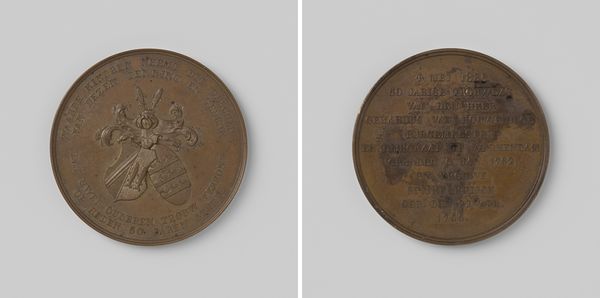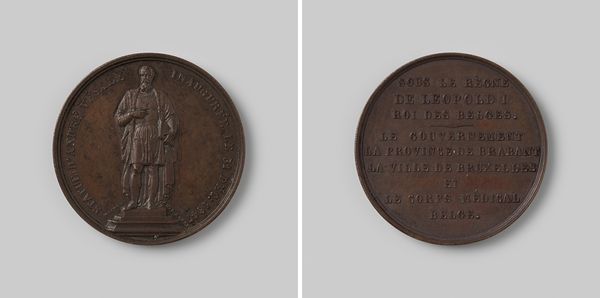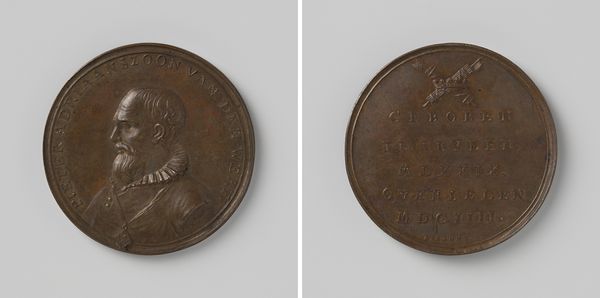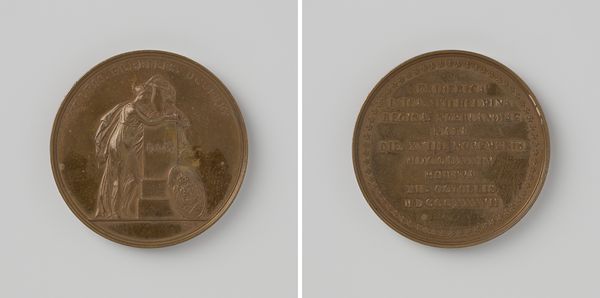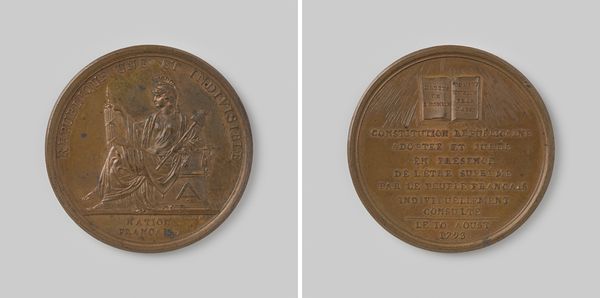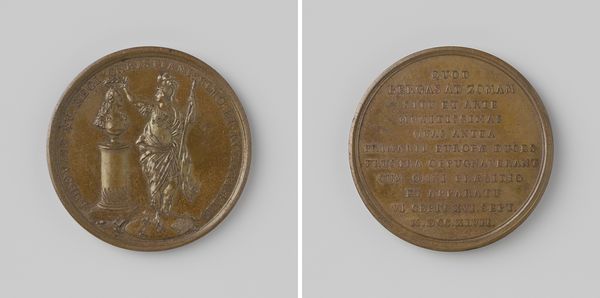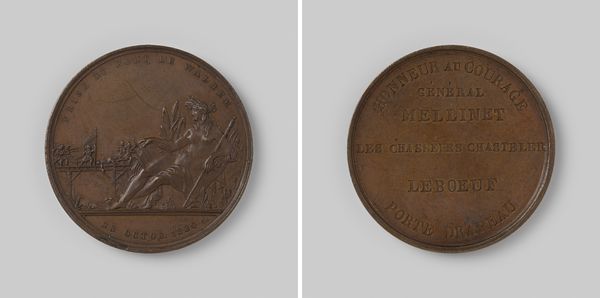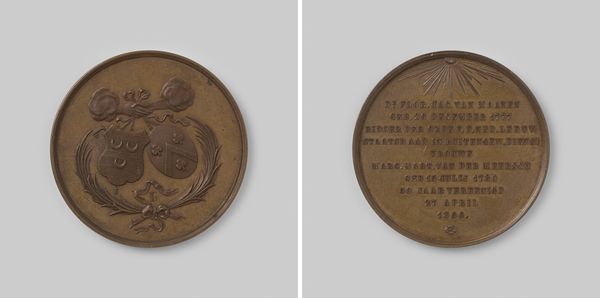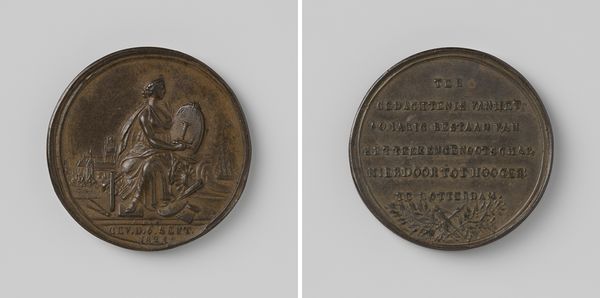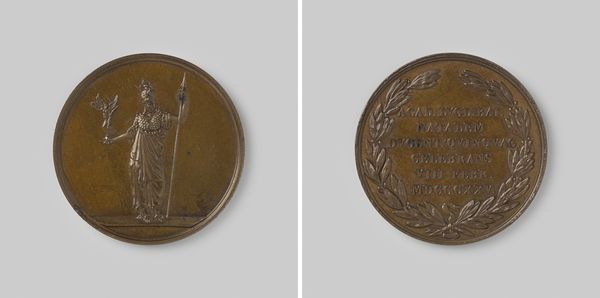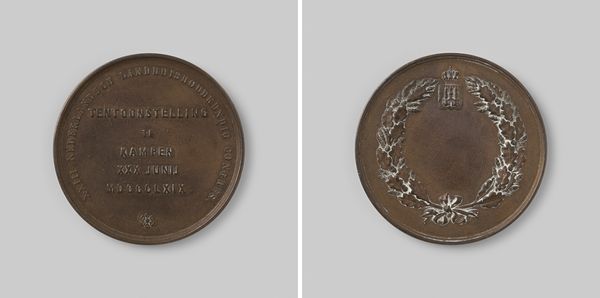
Overlijden van Wilhelmina Frederica Louisa, koningin der Nederlanden 1837
0:00
0:00
davidvander18041879kellen
Rijksmuseum
metal, relief, bronze, sculpture
#
portrait
#
neoclacissism
#
metal
#
sculpture
#
relief
#
bronze
#
sculpture
#
statue
Dimensions: diameter 4.1 cm, weight 31.43 gr
Copyright: Rijks Museum: Open Domain
Curator: Here we have a bronze relief sculpture, “Overlijden van Wilhelmina Frederica Louisa, koningin der Nederlanden” – “The Death of Wilhelmina Frederica Louisa, Queen of the Netherlands,” created by David van der Kellen in 1837. It’s a striking example of commemorative art. Editor: The circular form gives it such a sense of contained grief, doesn't it? The subtle gradations in the bronze emphasize the Neoclassical aesthetic, even in miniature. Curator: Exactly! Its form follows in a rich history of memorializing prominent figures through medals. The imagery conveys much about Queen Wilhelmina's legacy and the societal role attributed to royalty at the time. Notice the allegorical figure of, presumably, grief itself. Editor: I find her drapery to be remarkable in its elegant rendering. Note how it both conceals and reveals the underlying form. And the tomb against which she rests—the wheel at its base suggesting the turning of fortune. It's all a symbolic choreography, if you will. Curator: The wheel indeed underscores the themes of fate and the transience of life. I am also struck by the precise inscriptions; the economy with which they list out Frederica's existence in key data points. Editor: What can it tell us, do you think, about the Dutch monarchy during that period? Does the artist embrace the kind of symbolism typically associated with royalty, or subvert it? Curator: This falls within a period of consolidating the Kingdom of the Netherlands. Such objects helped legitimize and mourn figures integral to that construction of nationhood. Commemorating her this way solidifies her image as a national matriarch. The very creation and distribution of such objects shaped public memory. Editor: An incisive point about its political weight. Seeing it displayed today in the Rijksmuseum gives it another layer of interpretation – it becomes as much about reflecting on what we remember, as the original event itself. Curator: Yes, the sculpture becomes a nexus point; mediating past ideals of queenship and the present Dutch identity. We see reflected, not only what they wanted to be then, but who we have chosen to keep remembering. Editor: Indeed. By decoding this little relief, we've really unfolded a fascinating tapestry of political history and cultural identity. Curator: It's always amazing when close attention to detail illuminates not only the artistry but the broader narrative of power and remembrance.
Comments
No comments
Be the first to comment and join the conversation on the ultimate creative platform.
